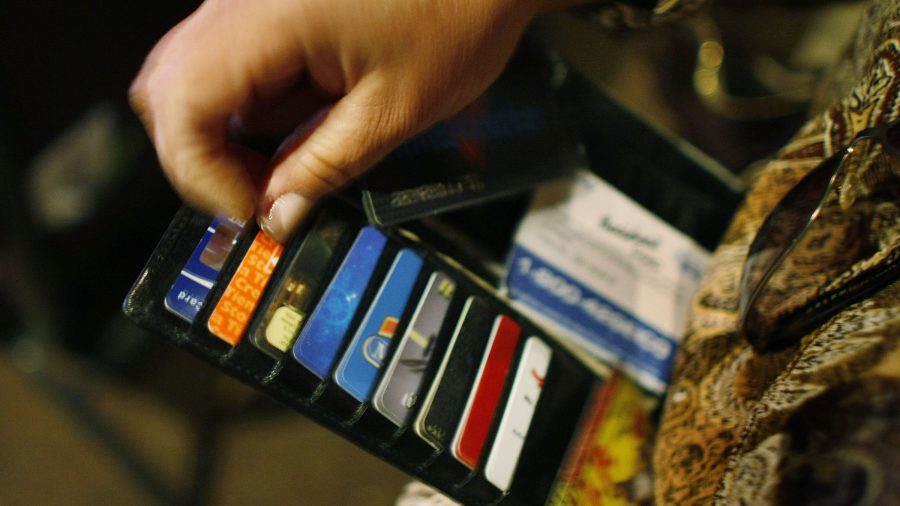We all have a credit score. Or do we?

When he was nine years old, José Quiñónez and his family migrated to the U.S. from Mexico. He was undocumented. Once he got his permanent residency, as a teenager, he was excited to get his first job and paycheck.
“I did open up a checking account just to, you know, help save, or manage manage the money that I was earning at the flea market,” said Quiñónez. This was all new for him. Growing up, his parents never had a bank account.
“We all worked and got paid in cash, and were able to pay our bills using cash, as well,” he said. Quiñónez getting his own bank account as a teen was an important first step toward establishing a credit score.
The credit score system relies on traditional banking to calculate credit worthiness. Credit scores can range from the 300s up to 850, and they help lenders determine whether an applicant should be granted a loan, a credit card or a mortgage. In other words, those three-digit numbers can rule a person’s financial life.
But there’s a group that’s left out of this system: people who don’t have access to basic banking, like undocumented immigrants. They can’t qualify for most credit cards or other mainstream lending services. This means they just don’t have a credit score, and it’s not always easy to establish one.
Michael Clements, director of financial markets and community investment at the Government Accountability Office, said these consumers are considered “credit invisible.”
“These would be individuals who do not have a file with the three major consumer reporting agencies,” said Clements. (That’s Experian, Equifax and TransUnion.)
A Consumer Financial Protection Bureau report from 2015 showed that some 45 million Americans didn’t have a credit score. He also looked at which groups typically don’t have access to banks. “Households with low income, those with less education and, finally, minorities, in particular African American and Hispanic households,” Clements said.
Without a bank, it’s hard to get a credit card, which starts your credit history.
Growing up with parents who were unbanked, Quiñónez experienced that firsthand. Now he’s the CEO of Mission Asset Fund, a financial technology company that formalizes so-called lending circles where undocumented borrowers who are credit invisible lend each other money.
These loans are modest by many people’s standards, in the low four figures. One person gets the loan amount every month until everyone in the circle gets their turn. That loan then becomes reportable to the credit bureaus, helping those borrowers establish a credit score.
“We work to help our immigrant communities, essentially to become visible, active and successful in their financial lives,” he said.
Quiñónez’s company isn’t the only one doing this. More fintech companies are getting into the lending space, saying they want to “democratize” banking and credit. But undocumented immigrants have to tread carefully — some companies have come under fire for alleged predatory lending practices.
And borrowers who participate in Quiñónez’s lending program have to have money on hand to be in a lending circle. Getting a credit score this way, if you’ve been invisible to the system, still requires both work and resources.
Related links: More insight from Kimberly Adams
Michael Clements has written several reports for the Government Accountability Office. In the report about the 45 million Americans who lack a credit score, Clements focuses on how mortgage lenders could make better use of borrowers’ alternative data; for example, rental payment history, to increase “access to mortgage loans” for credit invisible borrowers.
Technically you can be credit invisible even if you have a credit score. For example, if you only have a record at one or two of the three bureaus, for whatever reason. Credit.com published an explainer earlier this year on this: “Are you one of the credit invisibles?“
And finally, for more on the real-life consequences of living as a credit invisible consumer, The Washington Post has a story on how it factors into the massive gap between Black and white homeownership.
The future of this podcast starts with you.
Every day, the “Marketplace Tech” team demystifies the digital economy with stories that explore more than just Big Tech. We’re committed to covering topics that matter to you and the world around us, diving deep into how technology intersects with climate change, inequity, and disinformation.
As part of a nonprofit newsroom, we’re counting on listeners like you to keep this public service paywall-free and available to all.
Support “Marketplace Tech” in any amount today and become a partner in our mission.


















